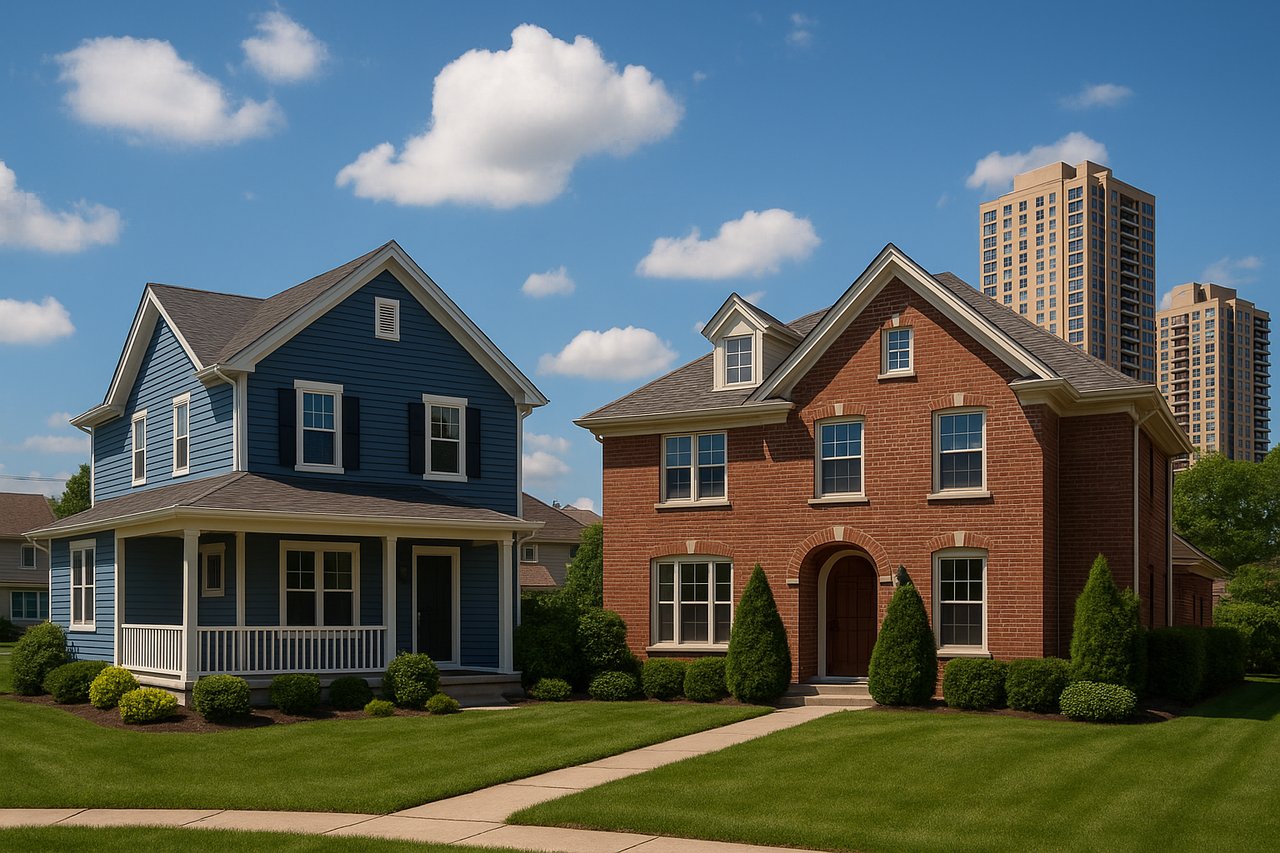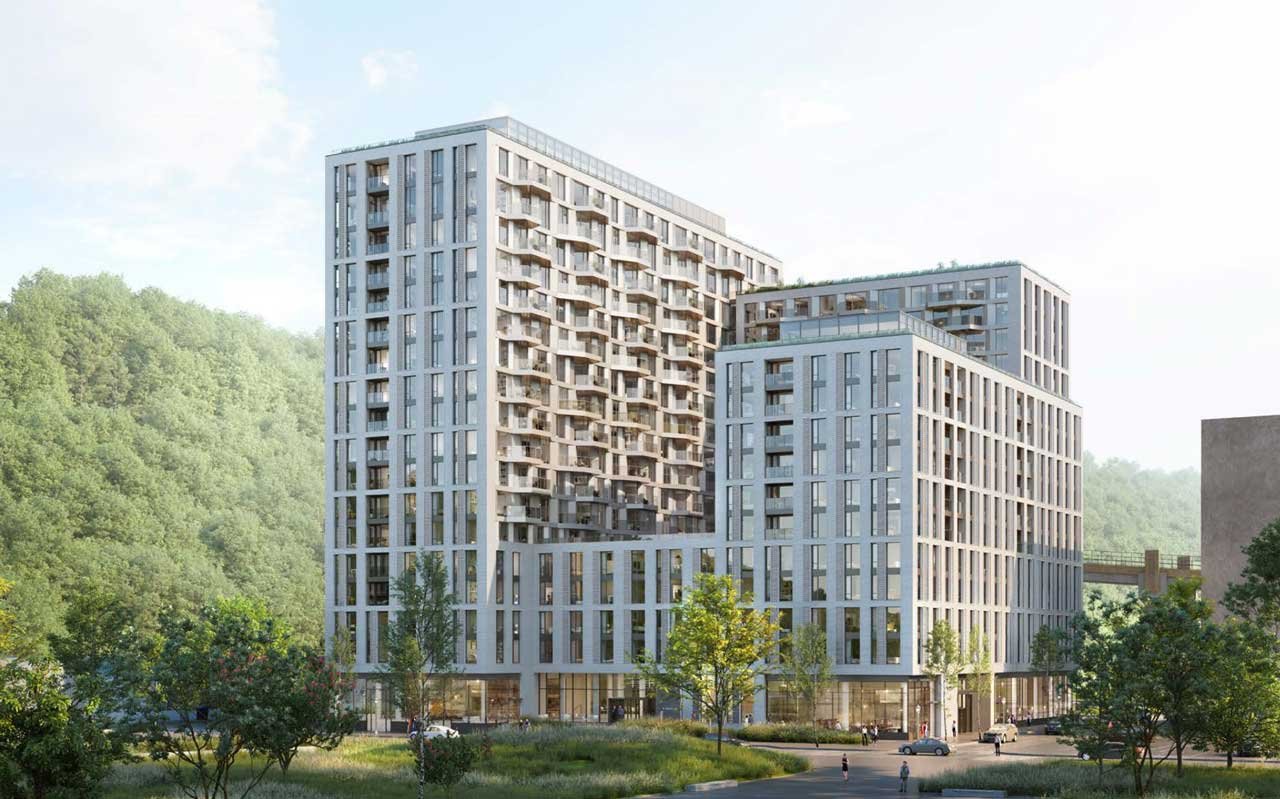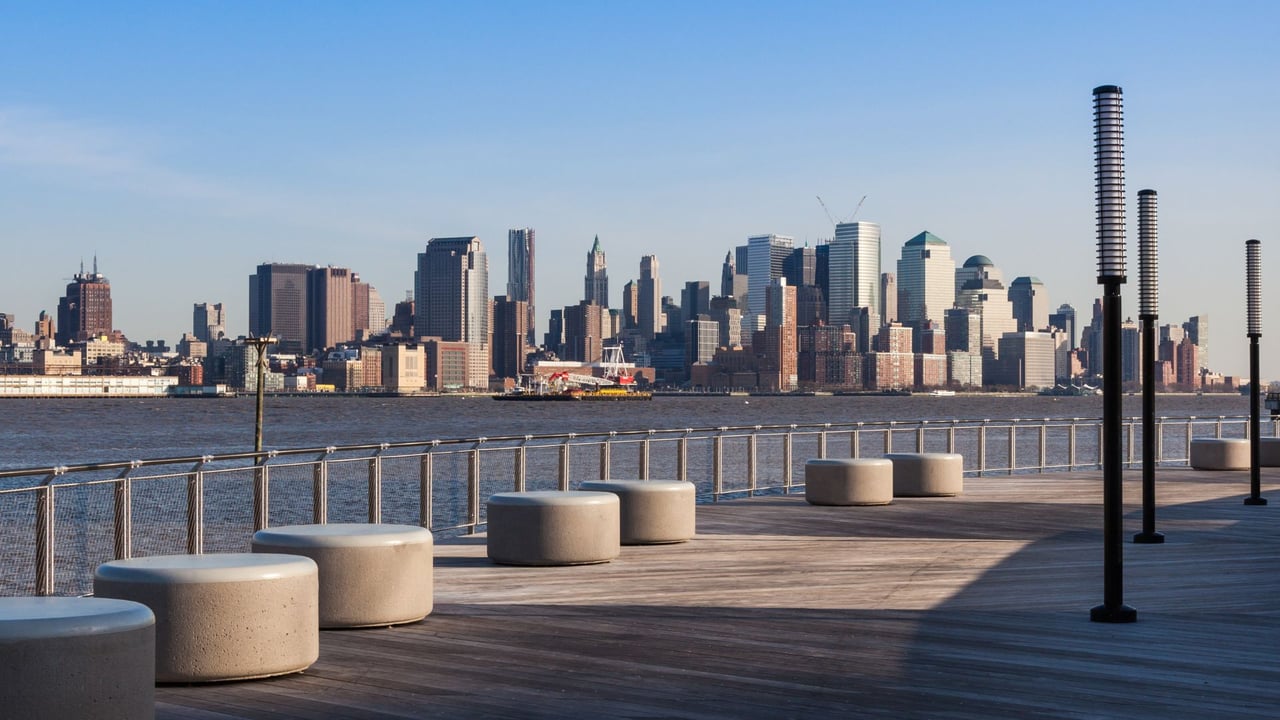If you've spent any time comparing real estate across New Jersey and New York, you've likely noticed something puzzling: homes in Upstate New York are dramatically cheaper than similar-sized properties in urban areas like Hoboken, Jersey City, or Weehawken—even when factoring in location and condition.
For example, in Hudson County, where demand is fueled by proximity to New York City, a modest two-bedroom condo might sell for $750,000 or more. Meanwhile, in towns across Upstate NY, such as Schroon Lake, Binghamton, or Gloversville, you might find a spacious four-bedroom colonial on an acre of land for under $200,000. Some distressed properties even list below $50,000.
But what’s behind this significant price gap? Is Upstate NY undervalued—or are Hudson County homes overpriced? The answer lies in a mix of economic, demographic, geographic, and lifestyle factors that affect everything from demand and job growth to accessibility and long-term investment potential.
This article explores why Upstate New York homes are so affordable—and what buyers in the Hudson County area should consider before chasing low sticker prices. Understanding the drivers behind real estate values is essential to making an informed decision. So, let’s dive into the factors that make homes in Upstate NY so cheap—and why Hudson County remains a high-value, high-demand market despite the rising cost of entry.
Table of Contents
1. Lower Population Density = Less Demand
Real estate values are primarily driven by supply and demand. In Hudson County, you’re just minutes from New York City. Hoboken, Weehawken, and Jersey City are bustling with commuters, professionals, students, and families. This constant demand creates competition and inflates prices.
In contrast, Upstate NY regions like Binghamton, Utica, or Elmira have shrinking or stagnant populations. Without strong demand, home prices stay low—even for large, well-built homes on big lots.
2. Economic Opportunity Is Limited
Job availability directly influences housing value. Hudson County benefits from proximity to the NYC job market and boasts industries like finance, real estate, healthcare, and tech. Residents often have higher incomes and commute into Manhattan or work for regional employers.
Upstate NY, on the other hand, has struggled economically since the decline of manufacturing and heavy industry. While there are universities, healthcare systems, and small business hubs, the pace of economic growth is slower, limiting income potential and, consequently, housing budgets.
3. Older Housing Stock and Renovation Costs
Many of the homes in Upstate New York are pre-World War II builds—loaded with historic charm, but also in need of major upgrades. Buyers may face outdated wiring, heating systems, roofing issues, or inefficient layouts. These renovation needs reduce the home’s marketability.
In contrast, Hudson County features a mix of modern condos, new construction townhomes, and gut-renovated brownstones. These homes are move-in ready and appeal to busy professionals and families, justifying higher sale prices.
4. Harsh Winters Drive Buyer Hesitation
Weather plays a subtle but important role in real estate. Upstate New York sees some of the harshest winters in the Northeast—especially in areas near the Great Lakes, where snow accumulation exceeds 100 inches annually. This leads to higher heating bills, road maintenance challenges, and long winters that can deter potential buyers.
Hudson County still experiences cold weather, but it benefits from a more moderate winter climate and better infrastructure for snow removal and transportation access.
5. High Property Taxes Without Urban Amenities
A common misconception is that cheaper homes mean lower total housing costs. But in many Upstate NY counties, high property taxes eat into the affordability. With fewer residents to share the tax burden and outdated infrastructure to maintain, many local governments keep rates high.
Hudson County’s property taxes are high too, but residents get access to excellent public transportation, proximity to NYC, better hospitals, high-end shopping, cultural amenities, and strong appreciation in home value.
6. Slower Appreciation and Investor Caution
Upstate NY homes are cheap for a reason—most of the markets there experience very slow appreciation. This makes them less appealing to real estate investors who prioritize long-term value and rental income.
Hudson County, however, consistently ranks as one of the best places in NJ for real estate investment. High demand and limited space result in steady appreciation. Investors and homebuyers alike see this as a way to build equity faster, even if the upfront costs are higher.
7. Lack of Lifestyle & Transit Infrastructure
People don’t just buy homes—they buy lifestyle. Hudson County offers walkability, a vibrant nightlife, waterfront parks, highly-rated restaurants, and an unbeatable commute to NYC. Public transit via the PATH, ferries, and NJ Transit keeps residents mobile and connected.
Upstate NY towns lack these features. You’ll often need a car to do anything—shopping, commuting, school runs, entertainment—which makes daily life more isolating, especially for younger buyers accustomed to urban convenience.
8. Low Population Growth & Aging Demographics
Upstate NY towns generally have older populations and lower birth rates. Without younger generations staying or moving in, there's reduced competition for homes and less urgency to build new ones.
Hudson County, by contrast, is attracting Millennials, Gen Z, and families fleeing NYC rents. This influx keeps the market competitive, pushes prices up, and sustains demand.
For your reference, below is a table that depicts a comparison of demographics and buyer age in Hudson County and Upstate NY:
|
Category |
Hudson County, NJ |
Upstate New York |
|
Resident Age Distribution |
||
|
- Ages 18–34 |
41% |
21% |
|
- Ages 35–54 |
33% |
27% |
|
- Ages 55+ |
19% |
42% |
|
- Under 18 |
7% |
10% |
|
Recent Homebuyer Age Breakdown |
||
|
- Millennials (25–40) |
52% |
25% |
|
- Gen Z (18–24) |
14% |
5% |
|
- Gen X (41–56) |
24% |
29% |
|
- Baby Boomers (57+) |
10% |
41% |
|
Population Growth Trend (2013–2023) |
+10.5% |
–4.2% |
|
Trend Direction |
Growing Urban Population |
Declining Rural Population |
9. Government Incentives Highlight the Challenges
Some Upstate NY towns offer homebuyer grants, tax forgiveness, or even $1 homes to stimulate growth. While appealing on the surface, these offers underscore the challenges of attracting new residents. These programs don’t guarantee job security or vibrant communities—and often target renovators willing to take on high-risk, high-effort properties.
In contrast, Hudson County doesn’t need to incentivize buyers—demand is naturally high because of the location, lifestyle, and market momentum.
Summary: Cheap Isn’t Always Better
Yes, homes in Upstate NY are drastically cheaper than those in Hudson County. But affordability doesn’t tell the whole story.
Hudson County real estate offers:
-
Better job access
-
Greater resale value
-
Stronger rental markets
-
High walkability
-
Access to major cities, airports, hospitals, and culture
Upstate NY can be ideal for buyers who prioritize land, space, peace, and don’t mind remote living or slower appreciation. But for long-term equity, lifestyle perks, and investment potential, Hudson County continues to be a strong choice—especially for professionals, families, and real estate investors.
Helpful Links
Final Thoughts
While the sticker shock of Hudson County real estate may raise eyebrows, the higher price tag reflects the area's deep-rooted advantages: economic opportunity, lifestyle access, long-term appreciation, and proximity to one of the most powerful metro markets in the world. Homes here aren't just places to live—they’re assets that tend to appreciate in value, provide rental income potential, and offer stability in an unpredictable housing market. For many buyers, that peace of mind and future return outweigh the upfront cost.
On the other hand, Upstate New York offers a drastically different real estate experience. The low purchase prices may appeal to retirees, remote workers, or buyers who prioritize land and tranquility over urban access. But the lower cost often comes with trade-offs: slower job growth, limited services, reduced resale potential, and ongoing renovation expenses. While it may be ideal for some, Upstate NY doesn't offer the same level of connectivity, community investment, or lifestyle convenience found in Hudson County.
If you're weighing affordability against long-term value, or deciding between space and location, Rick Truocchio can help you make the smartest move for your goals. As a Hoboken-based Realtor with expertise in both urban and suburban markets, Rick will guide you through the buying process and help you compare investment quality across regions. Call 201-320-2195 or visit StoryResidential.com to schedule a consultation today.
Frequently Asked Questions
1. Why are homes in Upstate New York so affordable?
Homes in Upstate New York are generally more affordable due to a combination of factors: lower population density, slower economic growth, aging infrastructure, and limited demand. Many towns have experienced population declines and deindustrialization, which has suppressed home values over time.
2. Is buying a home in Upstate NY a good investment?
It depends on your goals. If you're looking for low upfront costs, potential rental income, or a quiet rural lifestyle, Upstate NY can be appealing. However, appreciation tends to be slower, and some properties may require significant renovations. It’s important to carefully research local markets and job trends before buying.
3. Why is Hudson County real estate more expensive?
Hudson County real estate is driven by strong buyer demand, high-paying jobs, excellent public transportation, and proximity to New York City. It’s a desirable area for professionals, families, and investors due to its walkability, vibrant amenities, and long-term value potential.
4. Do Upstate NY homes come with higher maintenance costs?
Often, yes. Many homes in Upstate NY are older and may require updates to electrical systems, roofs, plumbing, or insulation. While purchase prices are low, buyers should factor in repair costs and energy expenses—especially for heating during harsh winters.
5. Are property taxes lower in Upstate New York?
Not necessarily. While home values are lower, property tax rates in some Upstate counties can be relatively high. Because populations are smaller, municipalities often spread the cost of public services over fewer taxpayers, resulting in higher effective rates.
6. Which location is better for long-term appreciation: Hudson County or Upstate NY?
Hudson County typically offers stronger long-term appreciation due to ongoing demand, limited inventory, and urban development. While some Upstate towns are revitalizing, price growth remains slower and more variable across the region.
7. Can I commute from Upstate NY to New York City?
For most of Upstate NY, commuting to NYC daily is impractical due to long travel times and limited transit infrastructure. Hudson County, however, offers excellent commuter options via the PATH train, ferries, buses, and NJ Transit, making it ideal for NYC-bound professionals.




